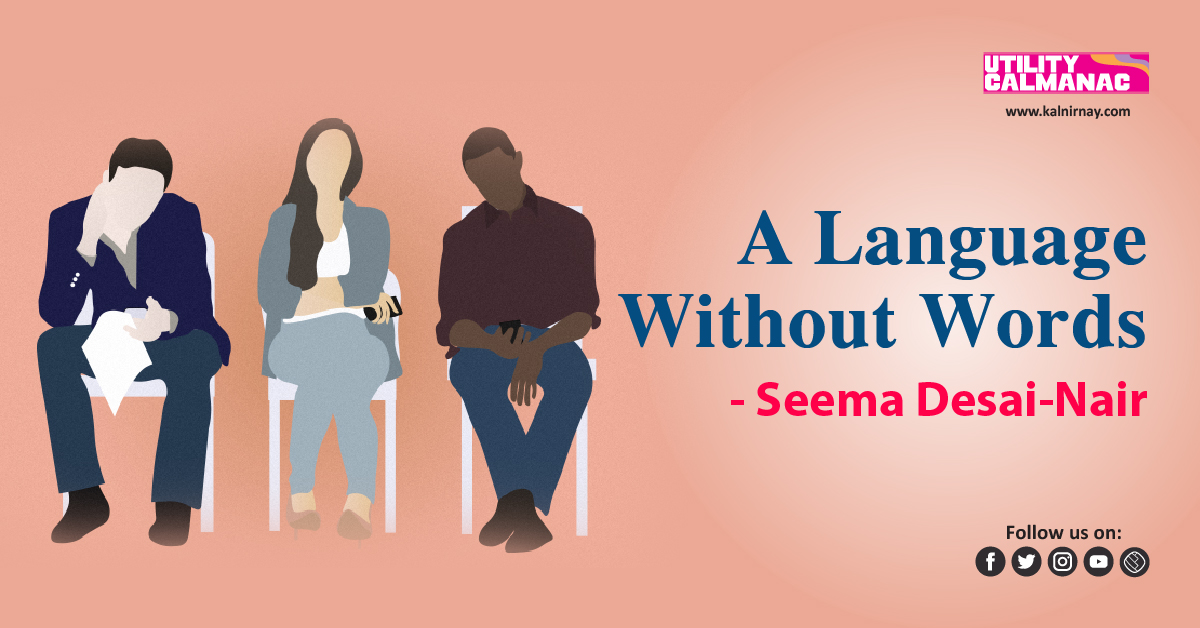A Language Without Words
Did you know body language speaks louder than words? Let’s look at how you can improve yours.
Have you ever caught a liar merely from their facial expression? Have you been able to tell that the confident person delivering the keynote speech is actually quite nervous? Can you explain why a stranger’s face suddenly gives you comfort at first sight? Every now and then, what someone feels and what they say can be totally contradictory. How can you tell?
It’s all about body language. Body language is a powerful non-verbal method that enables an expression of emotions through physical movements. These movements include hand gestures, eye movements, posture and facial expressions. To be a successful person, it is hard enough to be knowledgeable. One must be able to present information in a simple manner, with the right vocabulary and with humility and confidence. If used correctly, our body language helps us make a lasting impression.
American psychologist Albert Mehrabian started studying communication in the 1960s. A professor at the University of California at Los Angeles, he came up with the 7-38-55 model. This model revealed that in any effective interaction, words or speech account for merely 7%, facial expressions for 55% and tone of voice accounts for 38%. In other words, how you say it is more important than what you say.
What is Body Language?
Body language can be defined as an individual’s use of physical, and facial expressions and movements and specific characteristics to communicate. It is an essential and effective means of non-verbal communication. It happens at a subconscious level and is a helpful tool to decipher information about the communicator. On the flip side, body language plays a massive role in helping us create a good impression.
Types of Body Language
- Eye contact
Our eyes are the windows to our souls. They have the ability to express sympathy, attentiveness, anger or attraction. In a discussion, good, stable eye contact establishes attentiveness. If you’re looking away often, it signifies a lack of interest or distraction.
- Facial expressions and laughter
Your face has the ability to say a lot. For example, biting of lips or certain expressions give away your trepidation. The way you smile can convey whether you’re nervous or confident. Lips pressed together signal negative feelings like dislike, suspicion, etc. A mild smile is perceived as a friendly, likeable gesture.
- Physical expressions
Certain body movements are a great way to understand if someone is friendly or hostile. A firm handshake is considered a sign of confidence. A nervous person might be fidgety, while a calm person will be seated in a relaxed manner. Certain physical gestures have a universal meaning. While driving, a thumbs-up might signal appreciation, while a smile and a wave convey a greeting.
- Posture
How a person sits or stands can reveal their state of mind. An open posture, when your upper body is in a visible position, reveals a calm and flexible mindset. If you lean forward in a closed posture it could show your uneasiness. A person sitting upright, without moving much might signify an alert, an interested person as opposed to someone slouching, looking disinterested.
- Physical proximity
The definition of physical proximity varies from culture to culture. Individuals learn this from their social interactions. Today, as part of a multicultural society, understanding the boundaries of personal space is even more important. Remember that time when Michelle Obama, unaware of protocols, put an arm around Queen Elizabeth II? Much newsprint was dedicated to this harmless event.
While it is natural for someone to feel uneasy about crossing boundaries, a handshake is generally acceptable for a formal meeting. When two people hug, it shows that they are friends and are fond of each other. One can see how comfortable two people are in each other’s space and gauge their relationship.
Using Body Language to Your Benefit
We don many hats in society. As leaders, teachers, parents, partners, and team members, we manage multiple relationships daily. Awareness of non-verbal communication skills helps us be more effective and hence successful. Some things to remember especially if you are going for an interview of any kind include the following:
- Smile: To be able to converse fluidly, begin with a smile. It makes the other person comfortable and the conversation pleasant.
- Posture: This goes a long way in making an impression. Sit up straight, face straight ahead, shoulders stiff, legs straight and firmly in place. Keep your hand movements limited. If you are sitting down, make sure you touch your back completely to the chair.
- Walk: Walk in a straight line, at a balanced, controlled speed. Not too slowly, not too fast. This conveys a certain grace.
- Expressions: During awkward silences, make sure you maintain eye contact. A pleasant, neutral expression signifies you’re keen to hear more. Nodding as the other person is speaking shows that you are paying attention.
To read more English blogs, please visit our blog section.
Seema Desai-Nair
The author is a personality development coach and counsellor.

